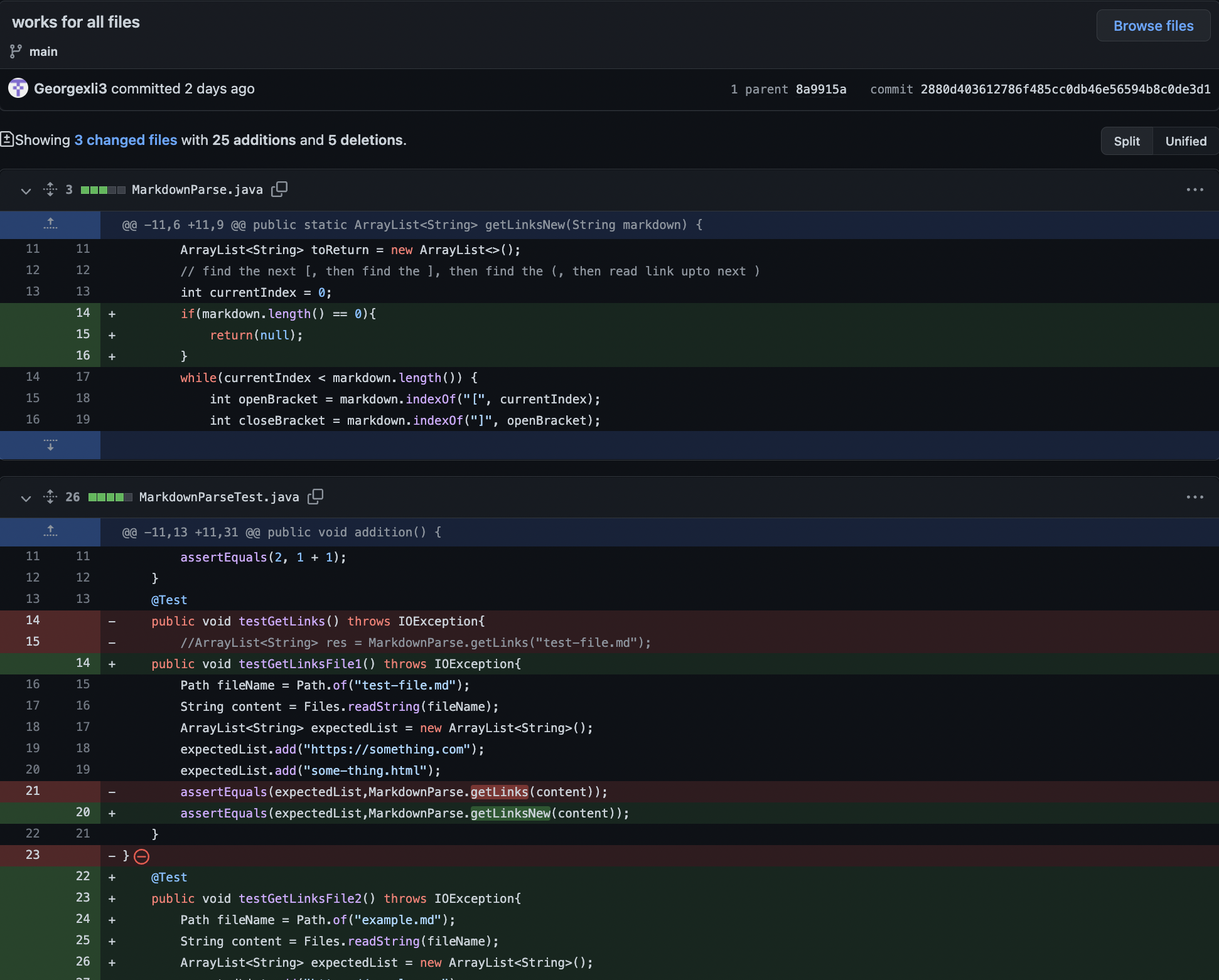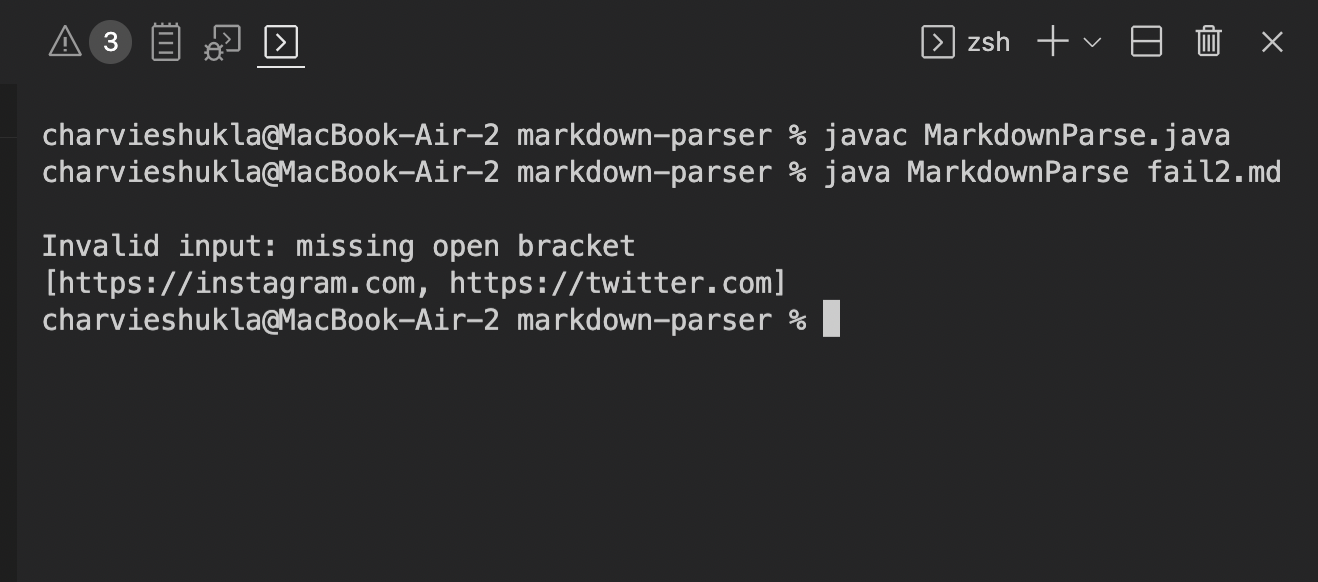cse15l-lab-reports
CSE 15L Lab 2
Name : Charvi Shukla
Email : cshukla@ucsd.edu
Introduction
Hello! Welcome to my Lab report #2 for CSE 15L! For the purpose of this lab report, I will be utilizing the MarkdownParse experiment we did in the Lab section for weeks 3 and 4. I worked on the markdown-parse lab experiment with George during class time, and forked his repository.
Screenshot for code change
Here is what our code change page looks like:


Click here to see the page.
Link to the test file for a failure-inducing input
Defining a failure inducing input
Let’s first define what a failiure-inducing input actually is. A failiure-inducing input is an input to the program that allows buggy code to execute, leading to symptoms. Symptoms are essentially wrong outputs or situations where the code crashes.
Failiure inducing input 1
This testfile, called fail1.md is an example of a failiure inducing input. The file, called fail1.md does not have any contents. This causes errors while running with the original version of MarkdownParse.java.
Failure inducing input 2
This testfile, called fail2.md is an example of a failiure inducing input. It contains an extra paragraph in addition to the links, which causes errors when running with the original version of MarkdownParse.java.
Failure inducing input 3
This testfile, called fail3.md is an example of a failiure inducing input. The last link in that md file does not end with a closing parenthesis. This is not accounted for in the original version of MarkdownParse.java, causing errors.
The symptom of that failure-inducing input
Let us first define what “symptom of a failiure-inducing input” actually means.
Symptopm for failure inducing input1
The failure-inducing input here is the testfile called fail1.md. It causes a StringIndexOutOfBoundsException which looks as following in the terminal:

A StringIndexOutOfBoundsException happens when the code tries to access either a negative or an index bigger than the length of the string.
Symptopm for failure inducing input1
The failiure inducing input here is fail2.md. This causes a java.lang.OutOfMemoryError: Java heap space error. This happens because the extra paragraph occurs before the links and does not contain any brackets or parenthesis. The algorithm orginally does not contain any means to account for such a situation leading to the error.

Ususally a java.lang.OutOfMemoryError: Java heap space error-message is thrown when there is insufficient space to allocate an object in the Java heap.
Symptopm for failure inducing input1
Thhe failiure inducing input here is fail3.md. There is an IndexOutOfBounds exception because the input file does not have a closing parenthesis for one of the links. The error message looks like this:

This, again, is a StringIndexOutOfBoundsException. It happens when the code tries to access either a negative or an index bigger than the length of the string.
The bug, the symptom, and the failiure-inducing input
Bug-input-symptom relationship for fail1.md
The bug in this scenario is the missing code that account for empty files. When a failiure-inducing input, i.e. an empty “.md” file is used (fail1.md in this case), the symptom is seen. Here, the symptom is a StringIndexOutOfBoundsException being thrown.
Bug-input-symptom relationship for fail2.md
The bug in this scenario is the missing code that account for inpputs that are not links, i.e. invalid inputs. When a failiure-inducing input, i.e. gibbersih in the input, which is not formatted as links is used, we run into an error. Here, the symptom is a java.lang.OutOfMemoryError: Java heap space exception being thrown.
Bug-input-symptom relationship for fail3.md
The bug in this scenario is the missing code that account for missing parenthesis. This means that the code should contain if statements which account for When a failiure-inducing input, i.e. wrongly formatted links are used, the symptom is seen. Here, the symptom is a StringIndexOutOfBoundsException being thrown.
Correct Code Output
Here is a screenshot of the code returning the correct output for all these inputs!
fail1.md correct output

fail2.md correct output

fail3.md correct output

Conclusion
This conculdes my lab report #2. Thank you for reading!
Sources Used: How To Debug